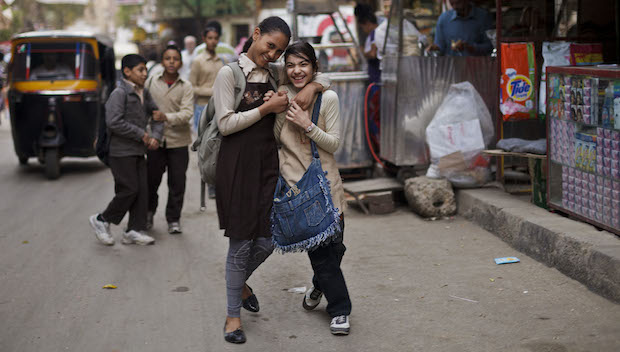Since the January 25, 2011, revolution in Egypt, talk about the role of women in the revolution, as well as their role in defending the economic and social rights of both genders, has proliferated. This explains the tableau of women queuing up to cast their votes in referendums and elections, as well as their confronting the sinister attack against them in the 2012 constitution.
During the revolution against the rule of the Muslim Brotherhood, women poured into the streets in their millions on June 30, July 3 and July 26, 2013. They also insisted that their delegations be granted access to the committee hearings for the Constituent Assembly. They were determined to write their demands into the new constitution in 2013, and thus the image of women going out to vote on the new constitution in long lines on January 14–15, 2014, was born.
These scenes were not the result of one moment, nor were they the result of individual women working on their own. Rather, they were the result of teamwork and the tireless efforts of all women working together across various bodies and authorities. Prior to the 2011 revolution, Egyptian women struggled to support their families, with many working to support their loved ones as a result of the displacement of a large number of workers and the expulsion of a large number of small farmers from their land. Various other reasons also contributed to one-third of Egyptian families becoming (and remaining) female-headed households.
Prior to the referendum on the 2012 constitution, which appeared to be hostile to women, Egyptian women began mobilizing. They aired their demands in front of the presidential palace: political, social, economic, cultural and civil equality among men and women, non-discrimination and governance by the rule of law. They also demanded that women be allocated a quota of seats in parliament, like the countries that provide for no less than 35 percent representation for women. In addition, they called for the criminalization of violence against women and for making 18 the age of majority, pursuant to all international conventions, in order to eradicate child marriage and trafficking.
After the ratification of the 2012 constitution shocked the women of Egypt, they began to work harder than before, through what was called the “Steering Committee for Collective Work of the Women of Egypt.” Along with them were the representatives of the National Council for Women. The task of the steering committee was to unify the media, mobilize, and carry out legal work, which led to increased pressure and a significant impact on decision-makers.
Women did not just work in the cities, but also in remote governorates and villages. Women came from all over Egypt, from the aristocracy and the working classes, to heal wounds and defend the rights of the martyred and injured. They demanded greater freedoms and the right to peaceful expression, accountability, an end to sedition and hatred, and punishment for those who burned and destroyed the homeland.
Egyptian women also came out during the July 26 demonstrations in local neighborhoods to reject US aid. They demanded their rights to health, education, and work for their children who graduated from secondary or higher education but who sit at home without work. They mobilized against price increases and terrorism, but engaged with young people and men without fear of terrorists.
Of course, society’s perception of women will not change through a few articles in the constitution or the law. Change will come through a shift in the societal and cultural view of women as inferior or marginalized. This perception must be changed through state institutions, media, law and tolerant religious rhetoric. But yes, women have made a number of gains since the January 25 revolution through to today. These achievements have been made not only for themselves, but for Egyptian society as a whole—although there is still a long way to go.
The counterpoint to this article can be read here.
